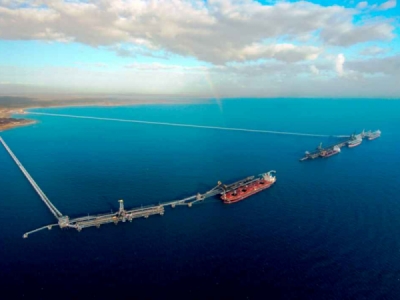
Posted on February 5, 2019
The 10-year permits, issued by the Great Barrier Reef Marine Park Authority, carry conditions that protect the marine environment.
Maintenance dredging at the Port of Hay Point is critical for maintaining port infrastructure.
Just like roads, shipping channels require maintenance to keep ports operating effectively.
The activities involve detailed regulatory approval processes under international conventions, and national and state legislation including periods of consultation and public submissions.
Maintenance dredging involves relocating sediment which travels along the coast and accumulates over the years where our shipping operation occurs.
NQBP’s assessment reports found the risks to sensitive marine environments as a result of the maintenance dredging were predominantly low.
The permits allow for the long-term, sustainable management of maintenance dredging at the Port and will safeguard the efficient operations of one of Australia’s most critical trading ports.
The initial maintenance dredging program is proposed to begin in late March and will run for around 40 days.
Background
NQBP is proposing to undertake maintenance dredging at the Port of Hay Point. This means responsibly removing natural sediment that has built-up in ship navigational areas and relocating it.
We have spent more than three years undertaking detailed studies and engaging with a range of stakeholders to understand the source of natural sediment accumulation and appropriate removal and placement options at the Port of Hay Point.
This work aligns with the recently developed Maintenance Dredging Strategy for Great Barrier Reef World Heritage Area Ports released by the Queensland Government.
Our maintenance dredging management plan has been developed in consultation with a Technical Advisory and Consultative Committee consisting of representatives from the Commonwealth, state and local government, port users, environmental/conservation and community interest groups.
NQBP lodged an application for a Marine Park Permit with the Great Barrier Marine Park Authority in December 2017.
Assessment of our application included a 60-day public information period and an information package to provide the community with an opportunity to understand and comment on what we are proposing.
NQBP lodged an application for a Sea Dumping Permit with Great Barrier Reef Marine Park Authority on 25 October 2018 under the Environment Protection (Sea Dumping) Act for placement of the dredged material at the existing placement area 6km away from shipping operations and approximately 100km from coralline reef areas of the Great Barrier Reef.
You can still access our public information package and all of our reports and research. Following the public comment period, GBRMPA requested further information from NQBP on 25 September 2018 and NQBP provided a Supplementary Information – Public Information Package report on 6 December 2018 in response to this request.
A sustainable solution
By taking a structured, value-based, decision-making approach, we have arrived at a safe, efficient and sustainable solution for keeping the Port of Hay Point open for business.
Our Port of Hay Point Sustainable Sediment Management (SSM) Assessment of Navigational Infrastructure was peer reviewed by marine scientist Dr Paul Erftemeijer and is considered best practice.
It weighed up possible options for sediment management and determined that placement of maintenance dredge material at the existing at sea placement area was consistently ranked as the highest performing long-term approach.
Importantly, our assessment reports have found the risks to protected areas including the Great Barrier Reef Marine Park Authority and Great Barrier Reef Marine Park and sensitive habitats are predominantly low with some temporary, short-term impacts to benthic habitat possible.
Source: North Queensland Bulk Ports





